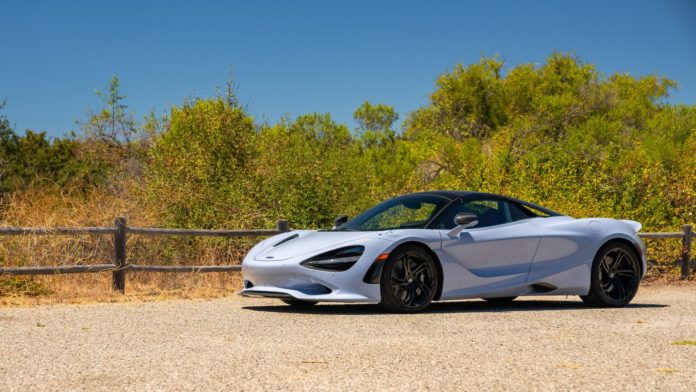The days in which hustling a supercar up a winding road required precise gear changes, pinpoint steering inputs, and meticulous throttle application have been over for quite some time. As much as we’d like to feel like heroes behind the wheel, the truth is that thanks to modern stability and traction systems, practically all supercars, even machines with a million horsepower that shoot flames, are no more challenging to drive than a VW Golf. There’s no longer an inherent need to be in tune with the machine that surrounds you. Point the nose, squeeze the throttle, and speed is yours.
The more captious amongst us, myself included, will be quick to point out that this technological invisible hand often creates an impenetrable layer between car and driver. That we’ve lost something central to what makes a proper supercar in search of outright performance. Yet, as I settled into my nearly six-hour drive south from Monterey, California, back to Los Angeles behind the wheel of a McLaren 750S Spider, I found myself rejecting the very point of view I’ve held for years.
Covering 350 miles in the middle of summer with temps often cresting triple digits is not what McLaren had in mind when it developed the 720’s successor. After all, its driving spirit is to be a more thrilling machine. It’s more powerful, producing 740 horsepower and 590 pound-feet, quicker to 60mph (2.7 seconds) thanks partly to shortened gears borrowed from the manic 765 LT. Its steering, brakes, and suspension are tuned with increased driver feedback in mind. However, as I slipped into its carbon fiber racing seats, reminiscent of the P1’s, none of this mattered.
Instead, as Car Week 2024 came to a close, I threw my duffle bag in the passenger seat, stuffed a carry-on and a garment bag in the 750’s nose, and settled into its narrow bucket seats. Today, this fire-breathing supercar would have to play grand tourer.
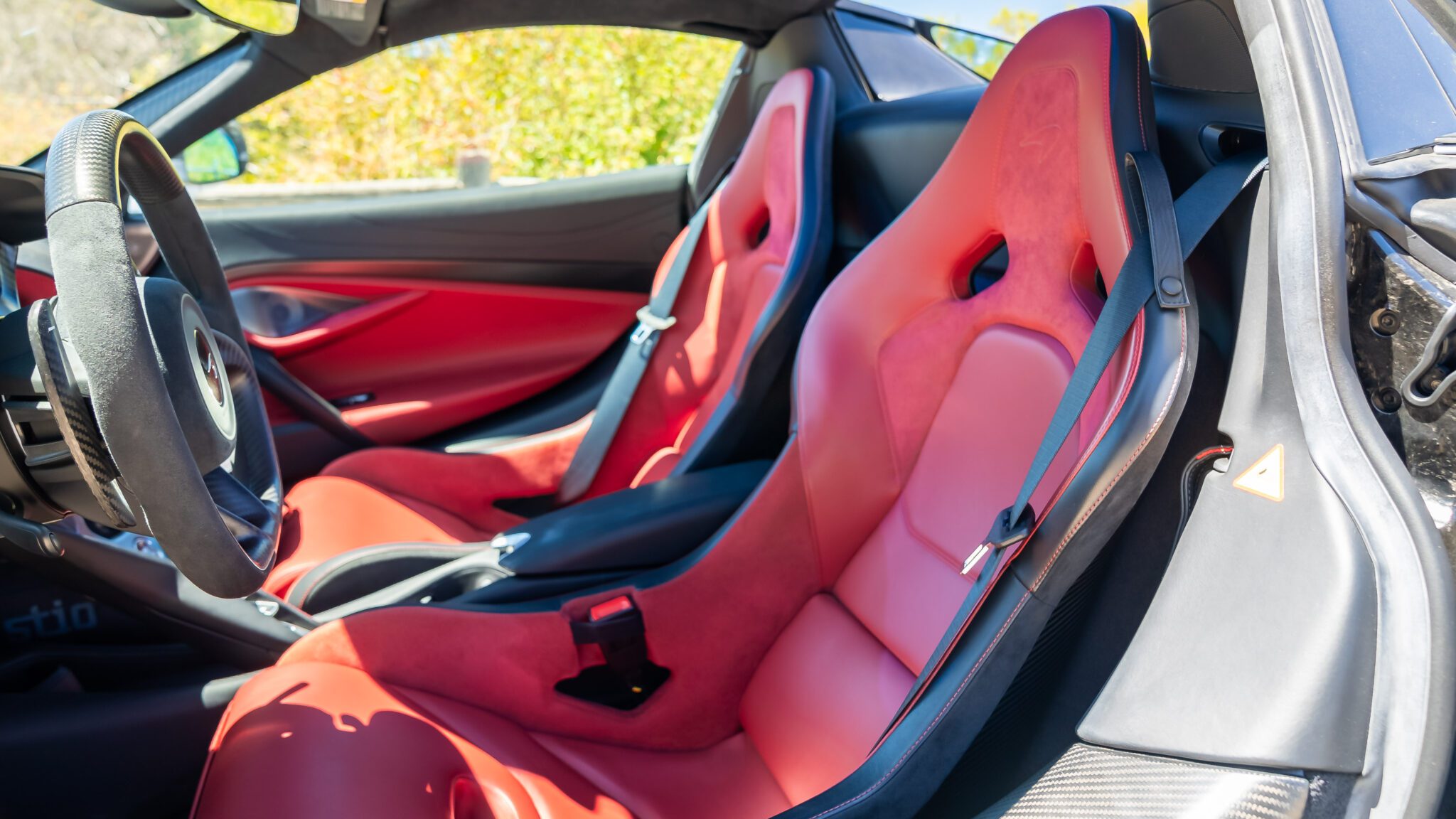
On paper, the $348,700 (including a $5,000 destination fee) McLaren 750S Spider reads like a terrible car for the job. Its 5.3 cubic feet of front storage space would make even Stuart Little want to pack light. There isn’t much room in the cabin if you don’t. If you have a passenger, that is. Fly solo, and the 750’s beautifully trimmed red leather and suede passenger bucket seat makes for an excellent, albeit pricey, shelf.
Luggage secured, I fired up the twin-turbocharged 4.0-liter V8 behind me, dropped the Spider’s top, which folds in 11 seconds at up to 31 mph, and set off. One of the 750’s party pieces, and every other McLaren for that matter, is the ability to adjust suspension and powertrain settings individually. Should you want to waft around town while savoring every pop and crackle its sonorous exhaust produces, you can do so without firm shocks shaking your teeth.
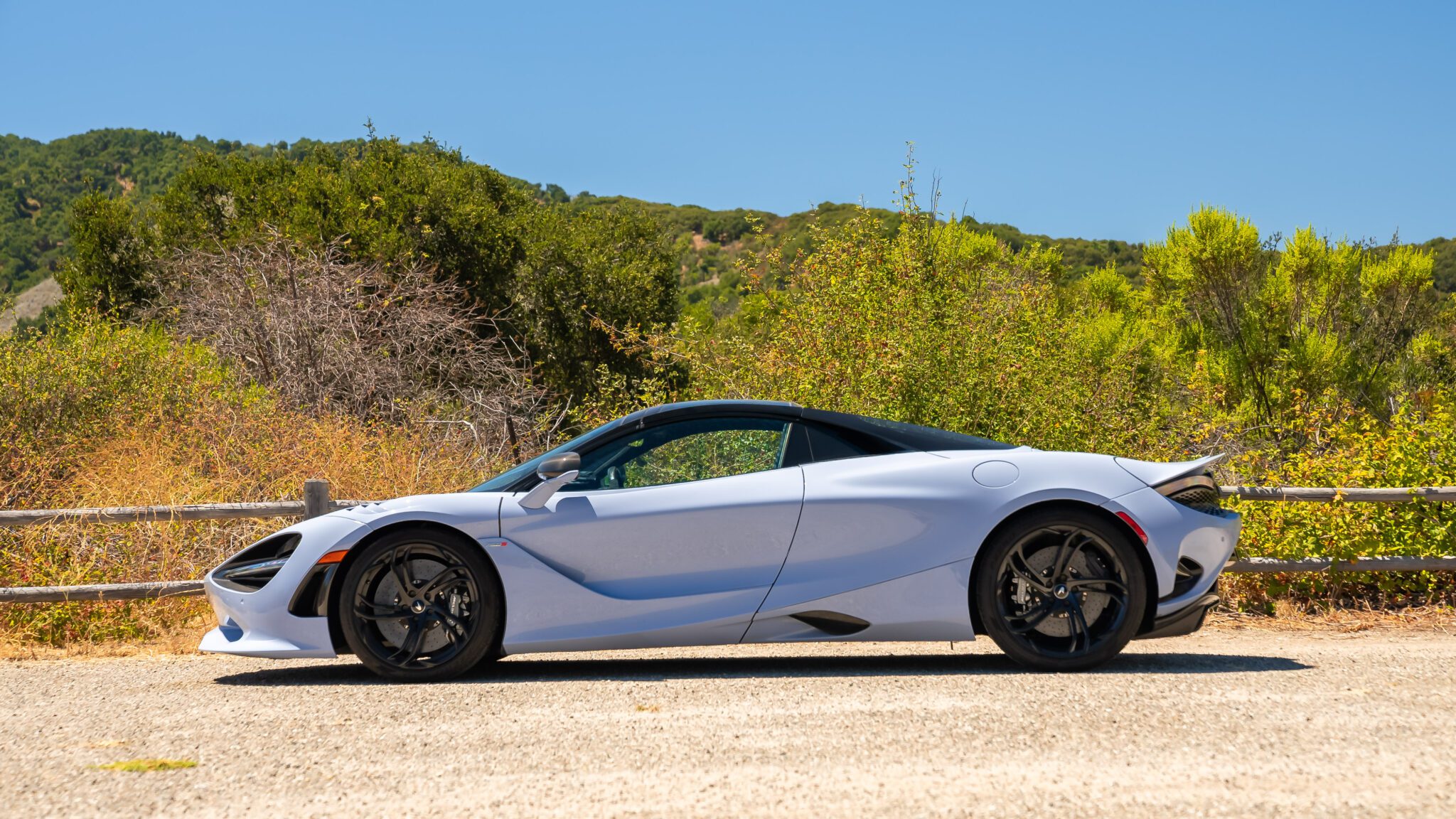
Like 2010’s 12C, the 750S’s paddle shifters are made of a single piece of carbon fiber. McLaren’s unique design allows you to up and downshift by pushing or pulling a single paddle. You can hold your coffee in your right hand while steering and ripping shifts with your left. It’s the little things.
Leaving Carmel, CA behind, I jumped onto the 101 heading south, following a delightfully loud Lamborghini Revuelto driven by a close friend. Moving into the left lane as its speedo climbed, the McLaren 750S settled nicely with its engine and dampers set to comfort mode. Its hydraulically-linked suspension, updated dampers, and lightweight springs soak road imperfections effortlessly without excessive harshness or unnecessary jolts. And despite its shorter gear set, it cruises quietly in 7th while music supplied by its new Apple CarPlay connectivity emanates from its speakers.
Unfortunately, the Driving Assist Pack available for the Artura Coupe and Spider doesn’t make its way to the 750S’s option list. As such, you won’t be able to get blind-spot monitoring, adaptive cruise control, or cross-traffic detection, which work brilliantly and only makes McLaren’s “entry-level” model even more usable.
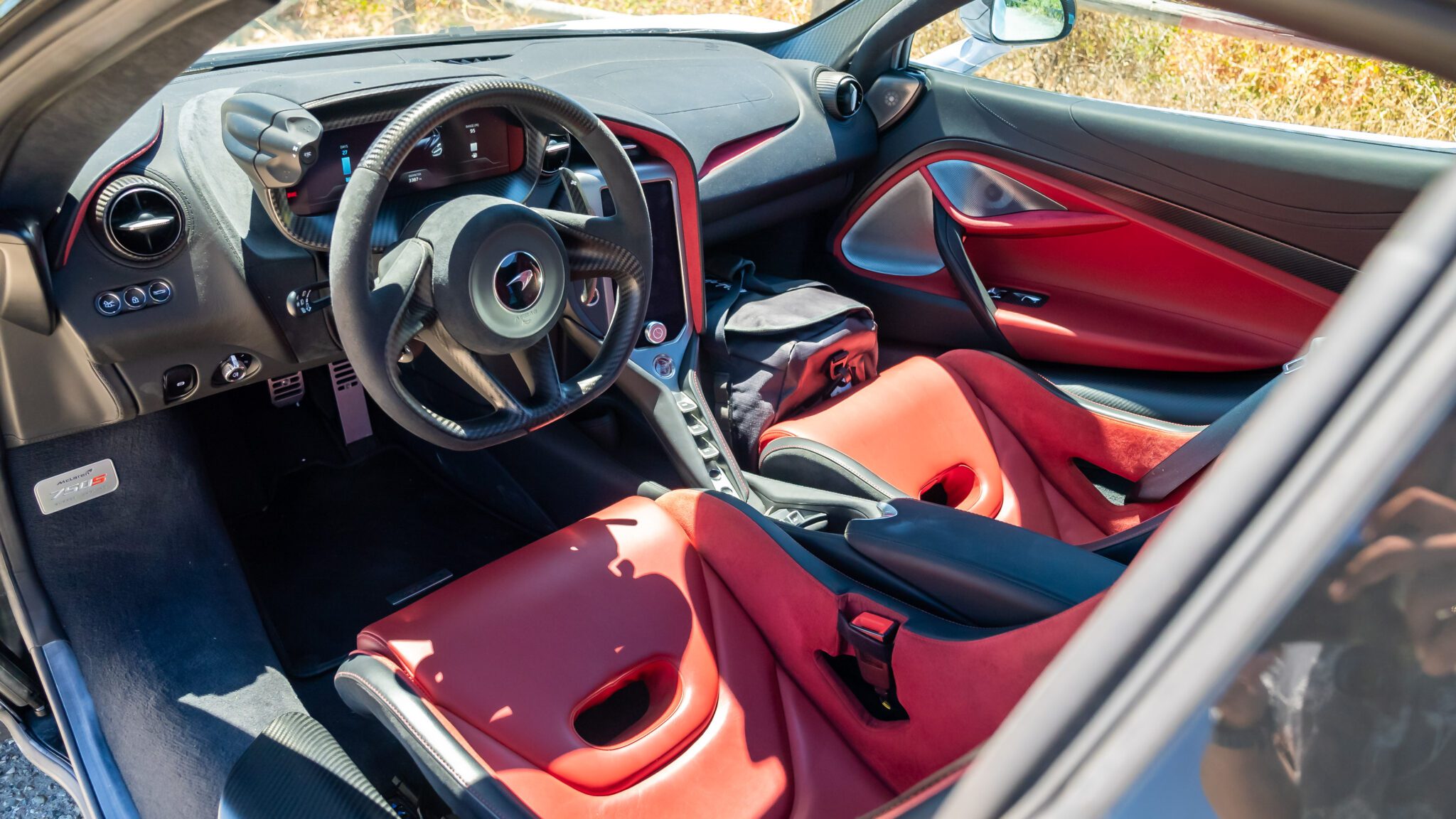
Call it Stockholm syndrome if you like, but the 750S’s P1-inspired buckets became a nonissue by hour two. Despite being relatively narrow, they’re supportive, reducing strain on your lower back. While you’ll have to roll them back to jump out, and I do mean jump out, they’re perfectly agreeable once you’re wedged in. Although the base Comfort seat will be more suitable for longer drives, it lacks the lateral support you’d want for a car this athletic.
As counterintuitive as it may sound, I’ve repeatedly found that the Super-Lightweight Carbon Fiber buckets, a.k.a. the Senna seats, work best for my 5’11 frame. Available in two sizes, adjusted mainly by padding thickness, they’re wider than the P1 seats and thus more comfortable and easier to get in and out of. Plus, it doesn’t hurt that they’re the best to look at.

As Santa Barbara drew closer, I turned off the highway and onto a twisty set of canyon roads that led down to the Pacific Ocean. With the top folded and its engine and suspension set to Sport mode (Track is less theatrical with smoother shifts for quicker lap times), the McLaren 750S morphed from a pseudo-GT into the thrilling supercar it was designed to be. I chased the Revuelto ahead for miles, diving into corners, the Mac’s impressive grip levels pressing me further into its bucket seats, only to shoot out the other side with tremendous speed.
As far as modern supercars go, the McLaren 750S feels charmingly old-school in the best ways. Its hydraulic steering offers the best feedback in the business, communicating even the slightest rut to your fingertips. Its brakes require a committedd press to actuate, but reward you with clear communication through the pedal. Click down a few gears, and it’ll serve up authentic pops from its crackling exhaust as it changes direction instantly, made possible by its 3,170 curb weight.
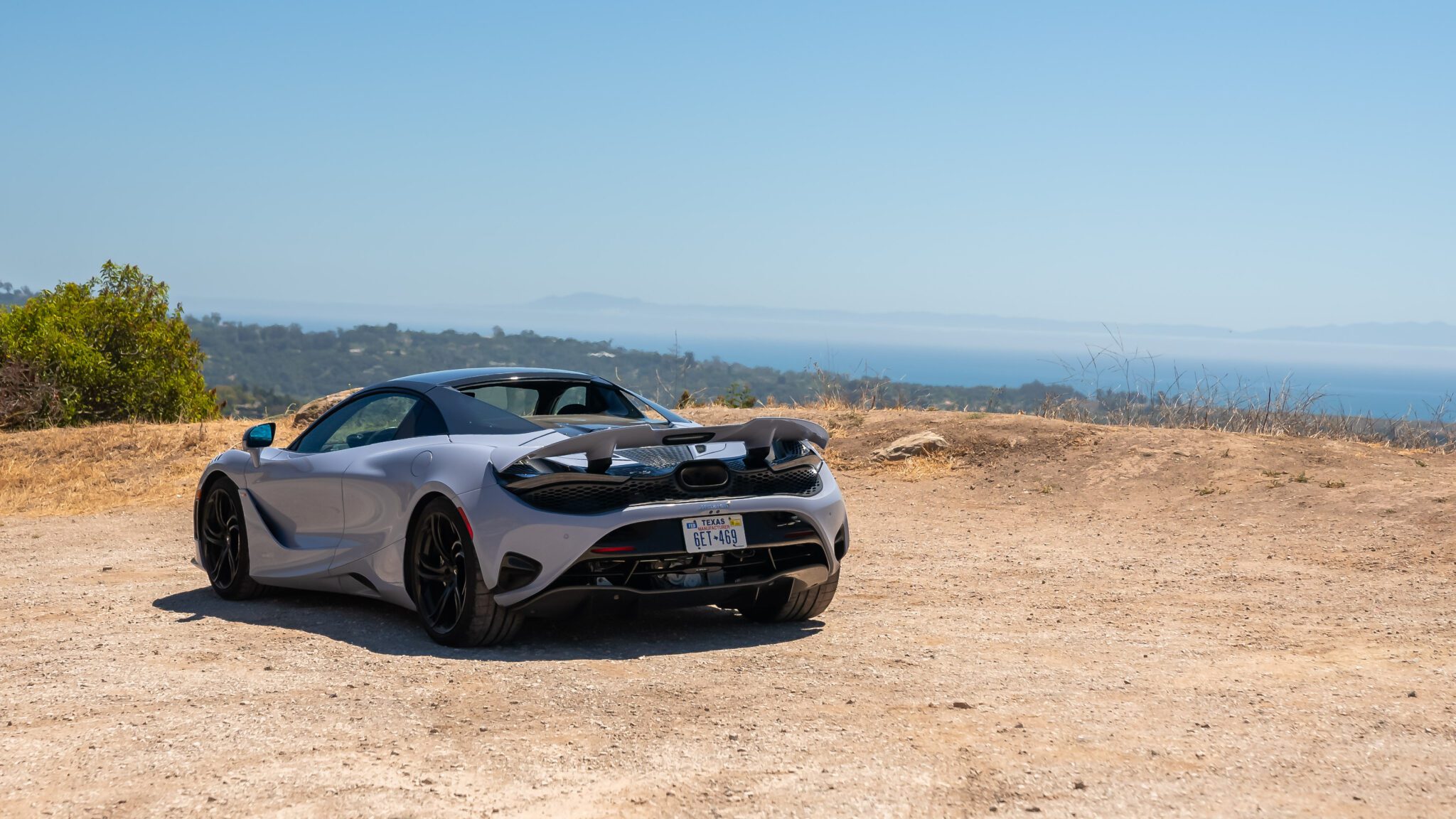
As the Pacific came into view, it finally clicked. This is the same car that silently cruised on the highway for hours, lugged a week’s worth of luggage, and still managed to be plush despite sporting fixed buckets. Supercars have never been easier to drive, and while that often takes away from the rawness of the experience, that’s a worthwhile trade-off if you end up with a more usable machine. What good is an on-the-edge exotic if the need to drive it only arises on special occasions under ideal conditions?
There’s a balance to be had, and the McLaren 750S finds it. This isn’t the type of car that requires masochistic inclinations to drive daily, but it’s more than engaging enough not to need any stablemates. Throughout my week in Monterey, I took it to the supermarket and bounced between events while still looking forward to a few hours of highway driving. As suspension technology intersects with more feature-packed cabins, the need for a dedicated Grand Tourer has begun to fade.
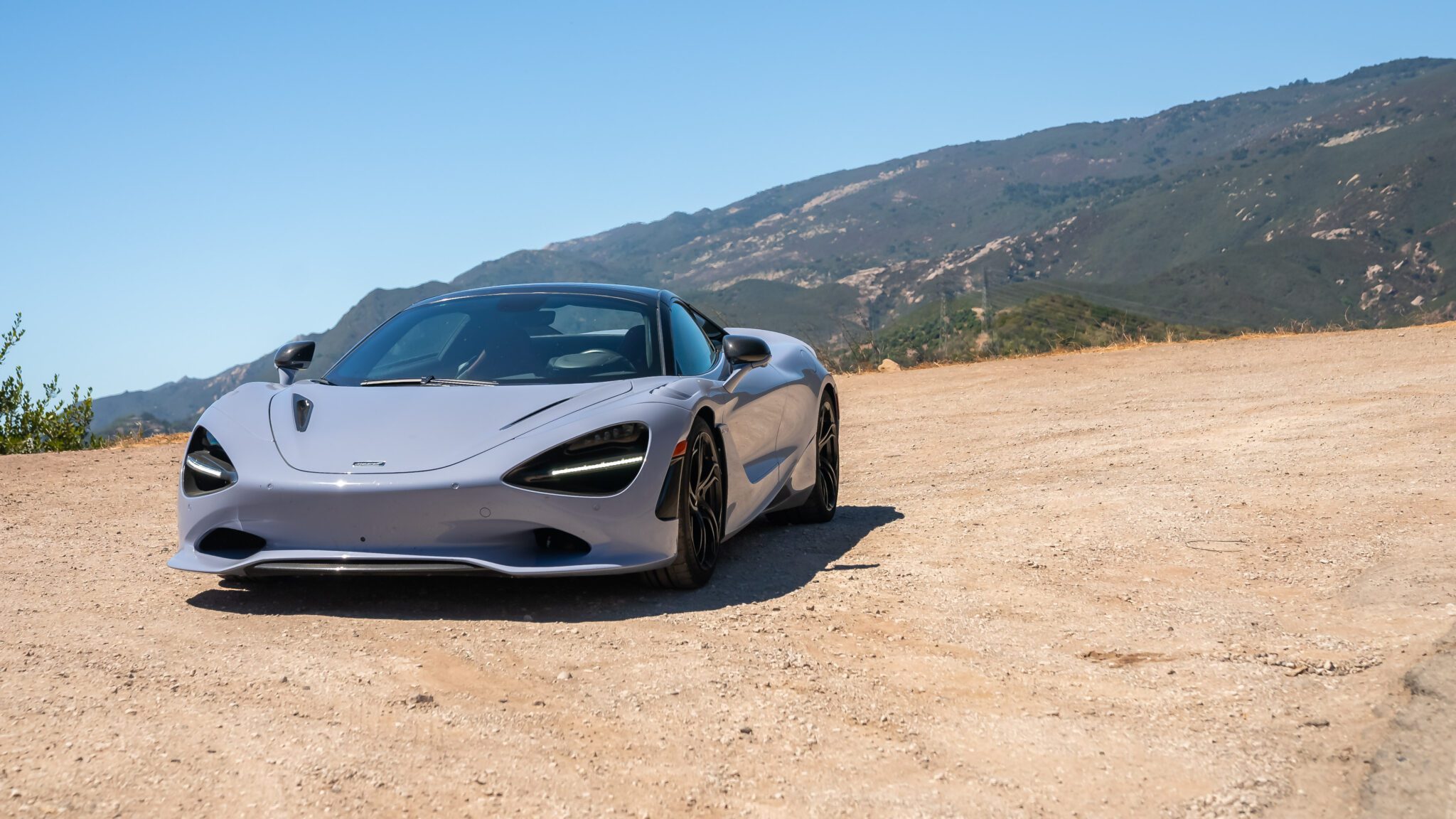
If you want any indication of how far the modern supercar has come in its usability, I lamented the 750S’s lack of adaptive cruise control earlier in this piece. Imagine asking the same of a Lamborghini Murcielago or a Porsche Carrera GT from 20 years ago. It simply wouldn’t happen.
Over the last 15 years, supercars have moved into a new vehicle class as owners and writers demand more versatility from these poster-worthy machines. However, after my drive in the McLaren 750S, I’m no longer convinced this is inherently bad. Of course, it comes down to how the latest powertrain and suspension tech is deployed, but if anything, supercars become more interesting the more usable they are. We get to use them, see them, experience them more.
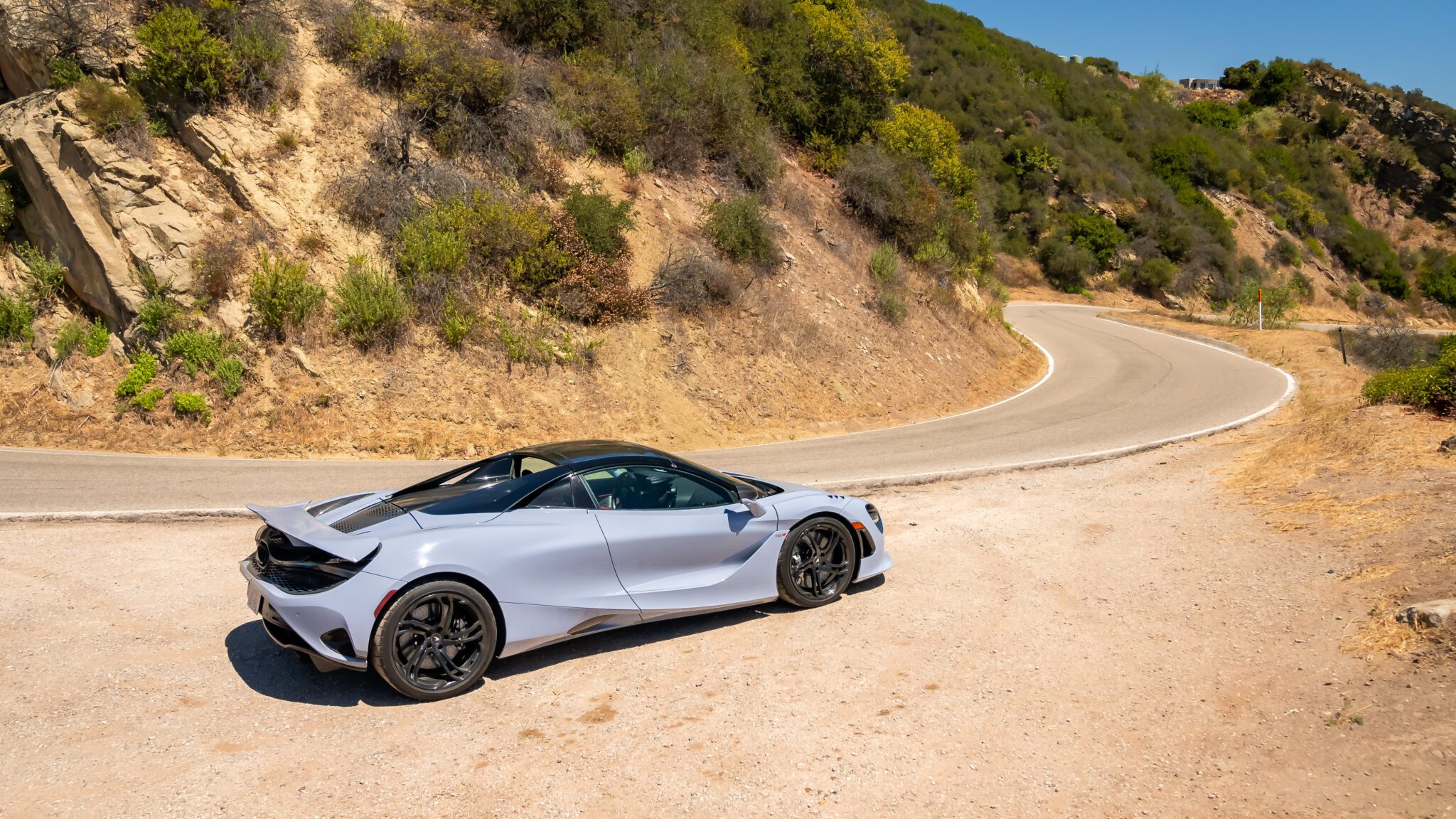
We enthusiasts are a fickle, almost unappeasable bunch. Give us a too-extreme or docile car, and we’ll still find things to complain about. However, we can all agree that more miles spent driving interesting cars will always be a good thing. While you’d have to think twice about road-tripping the aforementioned Porsche or Lambo, this isn’t the case with their modern successors.
As I reached Los Angeles and the sun began to set, I couldn’t help but wish my trip had another leg. It’s too soon to tell what the next electrified chapter of the supercar story will look like. Will they become even more usable? More docile? Less exciting? Cars like the hybridized Artura and the Ferrari 296 make a positive first impression. And while we do know the 750S will be replaced by a V8 hybrid-powered successor soon, we can only hope it tackles this new era with the same driving spirit as its predecessor.

